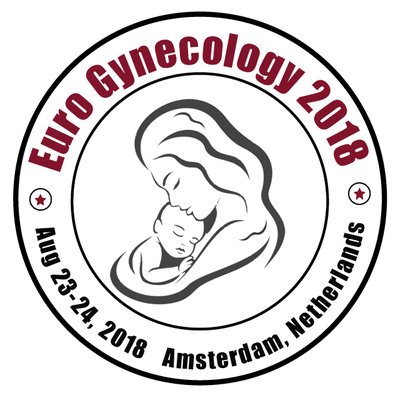Neonatal Meningococcal Meningitis in France from 2001 to 2013
Ali Bilal
Center Hospitalier Intercommunal, France
: J Womens Health, Issues Care
Abstract
Neonatal meningitis contributes substantially to neurological disability worldwide. Neonates are at increased risk of sepsis and meningitis than other age groups .The most frequent cause of neonatal bacterial meningitis is Streptococcus agalactiae (59%) and the second most frequent is Escherichia coli (28%) and Listeria monocytogenes is considered the third most frequent pathogen in the United States (5-10%) and France (< 3%). Neisseria meningitidis is occasionally implicated in neonatal bacterial meningitis. The objectify of this study is to describe epidemiological, clinical and bacteriological characteristics of N. meningitidis in France Methods: In total, 233 pediatric wards covering 61% of French pediatric wards participated in this network. Pediatric wards included 45% neonatal units in France. All patients ≤ 28 days of age with confirmed bacterial meningitis were included. Isolates were identified in the microbiology laboratory of each hospital. Neonatal meningitis was defined as early-onset (when occurring between days 0 and 4) and late-onset meningitis (when occurring between days 5 and 28). We crosschecked the databases of the (NRCM) for microbiological data and GPIP/ACTIV for clinical data. The data collection was approved by the French National Data Protection Commission (Commission National Informatique et Libertés, CNIL, no. 913006). Results: Between 2001 and 2013, data for 5,139 cases of bacterial meningitis were collected; 831 cases were neonatal bacterial meningitis (16.2%). Bacterial species implicated in the neonatal period were S. agalactiae (n=464; 55.8%), E. coli (n=232; 27.9%), N. meningitidis (n=23; 2.8%), L. monocytogenes (n=20; 2.4%), S. pneumoniae (n=18, 2.2%), other streptococcus (n=16; 2%), and other bacterial species (n=58; 7%). Among 23 patients with N. meningitidis, 12 were male (52%). The median gestational age at birth was 39.2 weeks. The median age was 17.9 days. Among the 23 cases, only 1 was early-onset (day 4); the remainders were late-onset (96%). Seasonal variation occurred, with the highest proportion of cases reported in winter. At diagnosis, 6 patients (27.3%) presented at least 1 sign of disease severity: all showed signs of shock (27.3%), 3 needed mechanical ventilation (13.6%), 2 were in a coma (9.1%), and 2 presented extensive purpura (9.1%); noseizures were reported. In the 434/807 term-born patients (53.8%) with late-onset meningitis, the proportion of NMM was 5.1% (22/434). N. meningitidis was isolated in 91% in CSF 2 had negative CSF culture (9%), one was diagnosed with positive PCR in CSF and other one had positive antigens. The serogroup distribution was serogroup B for 18 cases (78%), C for 3 cases (13%) and others for 2 cases (9%). The minimum inhibitory concentration was tested for cefotaxime, amoxicillin and penicillin G for 17 strains. All tested isolates were susceptible to cefotaxime. (12%) showed intermediate susceptibility to amoxicillin and penicillin G. Two patients died (both were girls, who showed late-onset meningitis at days 10 and 23, respectively). Conclusions: Among 831 cases of neonatal bacterial meningitis occurring from 2001 to 2013, Neisseria meningitidis was the third most frequent bacterial species found. All cases occurred only in term neonates and were mainly late-onset. Serogroup B accounted for 78.3% of cases. At diagnosis, 27.3% of cases had at least 1 sign of disease severity. All strains were susceptible to cefotaxime, but 12% showed intermediate susceptibility to penicillin G and to aminopenicillin.
Biography
Ali Bilal is a Neonatologist, Working at Center Hospitalier Intercommunal, in Department of Neonatology 40 avenue de Verdun, 94000 Créteil, France
 Spanish
Spanish  Chinese
Chinese  Russian
Russian  German
German  French
French  Japanese
Japanese  Portuguese
Portuguese  Hindi
Hindi 



